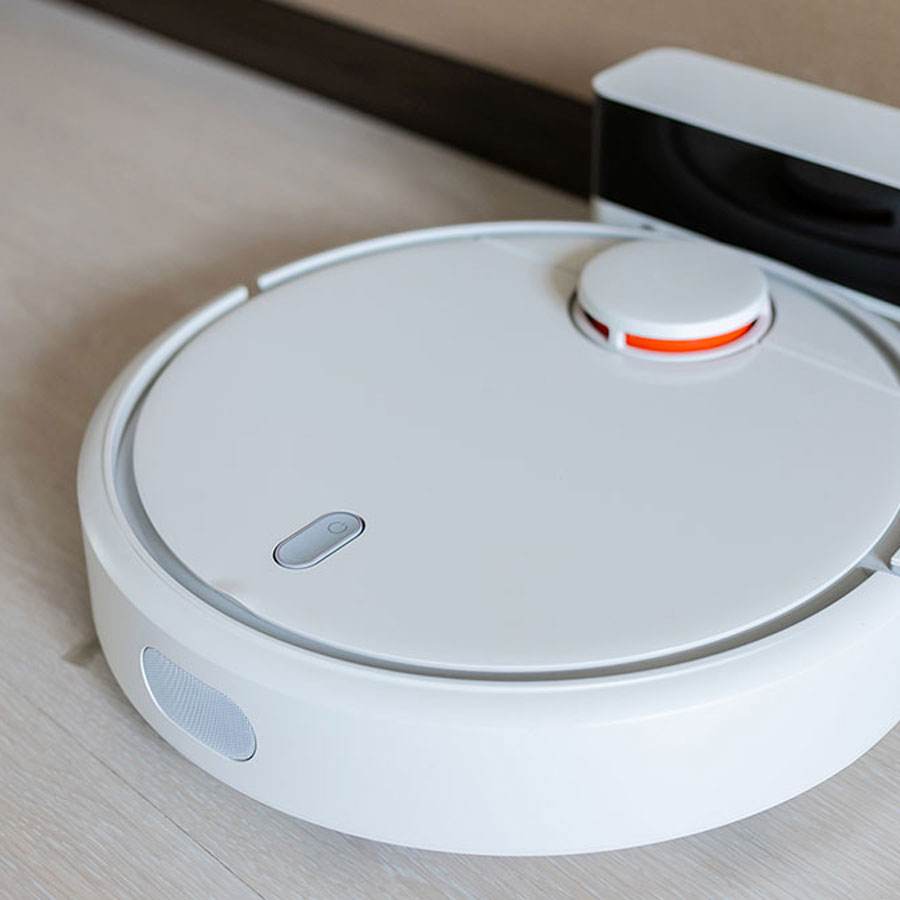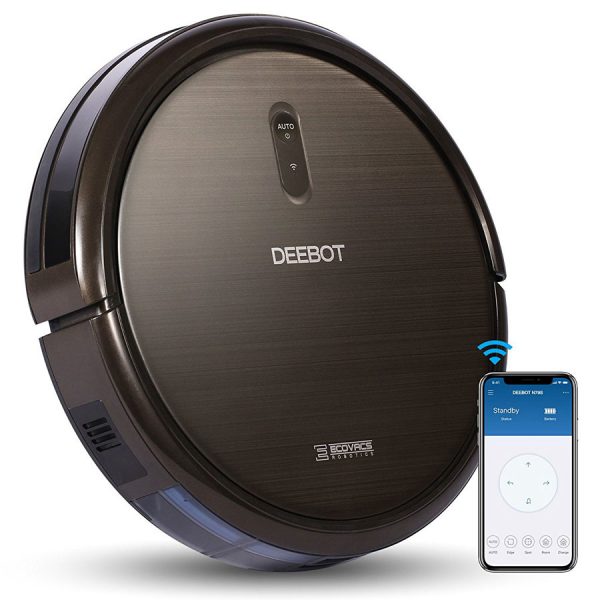Robot vacuum life expectancy is a crucial point to consider when picking the brand and model.
Many robot vacuums cost almost $1,000, and no one wants to spend that sum every year unless it’s a new iPhone.
Most robot vacs last two to six years if used regularly, but the appliance’s lifespan ultimately depends on you. Even the most durable robot vacuums need timely cleaning and part replacement.
You can get an expensive high-end robot vac, but if you don’t take care of it, it won’t last over two years. On the other hand, a vac for under $300 can work for a decade with proper maintenance.
However, reading the manufacturer’s warranty and user reviews is helpful. For example, some brands only cover manufacturing defects, whereas others will happily replace the batteries or brushes for free.
iRobot
Roomba by iRobot was among the first robot vacuums in the world and one of the most popular options. The array of available models is vast, so everyone can find one to fit their unique needs and budget.
The average life expectancy of a Roomba robot vac is two to six years. The appliance’s lifespan depends on your lifestyle, whether you have pets or kids, cleaning frequency, model, and how well you take care of the vac.
As a rule of thumb, any robot vac will last longer if you live alone or only run it occasionally. Robot vacs inevitably deteriorate faster in households with long-haired dogs, young children, or large houses that need daily cleaning.
Many Roomba parts are replaceable, so you don’t need to worry about the longevity of brushes or wheels. You can get new components from the manufacturer’s website or online marketplaces.
With timely cleaning, your Roomba’s wheels and brushes can last for several years, and the dustbin might never need a replacement. However, you must replace the filter every two to six months.
Roomba battery should last about 400 charging cycles. Depending on the model, the battery can operate for one to three hours. On average, Roomba owners need to replace the battery every two years.
From personal experience, Roomba can last even longer if you only use it occasionally. My ancient Roomba 600 Series purchased back in 2013 still works, and all I did was replace the brushes and filter.
iRobot provides a two-year warranty on manufacturing and parts defects, but it doesn’t apply to batteries, brushes, and other parts that need regular replacement.
Ecovacs
Ecovacs is one of the most popular robot vacuum brands and Roomba’s main competitor. Ecovacs Deebot users report their vacs last for three to seven years with proper maintenance.
Of course, you still need to replace some parts occasionally. The brushes or wheels might deteriorate quicker than the battery, particularly if you have children or pets. Regular cleaning will help you prolong the lifespan of the parts.
Ecovacs Deebot battery lifespan is slightly longer than Roomba’s, ranging from two to four years. After some years, the performance starts to slip, and you need to replace the battery. Some Deebot owners never need to replace the battery.
Fortunately, replacement parts for Ecovacs Deebot are widely available because of the vac’s popularity, so you should have no issue prolonging the appliance’s lifespan.
Ecovacs provides a two-year warranty on manufacturing defects. However, the warranty doesn’t cover parts that need periodic replacement.
Xiaomi
Xiaomi released its original Mi robot vac in 2016, many years later than iRobot. Some original Mi’s are working just fine over five years later, which isn’t surprising considering Xiaomi is a reputable, high-quality brand.
Of course, your Xiaomi robot vacuum life expectancy largely depends on how you take care of it. If you never clean or replace the parts, your robot might die in a year. But with proper maintenance, it can last up to seven years.
Xiaomi claims the battery can last up to two years before it needs a replacement. However, it can last longer if you rarely use the robot vac or die sooner if you use it actively.
Xiaomi robot vacs come with a 12-month warranty. You can get a free repair and part replacement throughout the warranty period, provided the damages aren’t your fault.
Samsung
Most robot vacuums last for four to six years, and Samsung robot vacs aren’t an exception. Expect to replace the battery every two years, brushes every six months, filters every three months, and sensors every two years if you use the vac daily.
Given that Samsung robot vacuums aren’t the cheapest, one would expect them to last longer than average. However, the appliance’s lifespan depends merely on how you use and maintain it.
Samsung robot vacuums are backed by a 12-month warranty applied to all manufacturing defects. The warranty also covers the battery and other consumable parts, so if you need a replacement earlier, you can get it for free.
Roborock
Some users report that Roborock robot vacs don’t last as long as Roomba or Deebot do. Still, you can expect a Roborock life expectancy to be at least three years with daily cleaning.
If you clean the components and replace them timely, you can prolong the vacuum’s lifespan to five or six years. Interestingly, the durability doesn’t seem to correlate with the model’s price.
You can get a more expensive Roborock hoping for it to last longer, but the lifespan of the Roborock S7 MaxV Plus won’t differ from Roborock S7.
Fortunately, you can order Roborock robot vacuum replacement parts directly from the manufacturer’s website instead of hunting for them on eBay or Amazon.
Roborock gives a one-year warranty on all robot vacuums. The warranty doesn’t cover consumable parts like batteries and brushes, damages caused by misuse, and normal wear and tear like scratches and dents.
Eufy
According to the manufacturer, a new battery will last up to three years if the robot vacuum is in standby mode. Consequently, you can expect it to live for one to two years with regular work, depending on the cleaning frequency.
However, your robot vac doesn’t die when the battery does. You can replace the battery, brushes, wheels, filters, and other internal and external components to prolong your vacuum’s lifespan to three, five, or even seven years.
Eufy gives a one-year warranty on its robot vacuums. You don’t need to register your vac for the warranty, but you need to hold proof of purchase. The warranty doesn’t apply to consumable parts or damages resulting from misuse.
Dyson
Dyson robot vacs are in the higher price range, which is expected from a brand selling hair dryers for almost $500. For the price, you likely expect the robot vacuum to last longer than cheaper models, and you’re right.
The estimated Dyson robot vacuum life expectancy is seven to ten years, as opposed to two to six years of other vacs.
All Dyson robot vacuums come with a two-year warranty, which is twice longer as most brands. Furthermore, the warranty covers batteries, brushes, and other consumable parts that aren’t typically covered by other manufacturers.
Other Brands
If you’re looking for the best robot vacuum with a long life expectancy, consider Bissell, Miele, Rowenta, or Shark.
These brands provide a two-year warranty on all manufacturing defects. Plus, these brands have long proven the high quality of their products, and user reviews are positive.
Note that the warranty doesn’t cover defects occurring due to misuse. You should only use the vacuum for its direct purpose and get original replacement parts.
How to Prolong Your Robot Vacuum Lifespan
As you can see, your actions affect your robot vacuum’s lifespan more than its brand. Learn how to take care of a robot vacuum to prolong its life expectancy and avoid costly repairs.
Remember to clean your robot vacuum after every use. There’s no need to clean every part, but you should empty the dustbin and filter and wipe the sensors. These steps take a couple of minutes.
Check also the wheels and brushes – they must rotate freely. If any hair is tangled around the wheels or brushes, remove it to maintain your vac’s efficiency.
Give your vacuum a deep clean monthly. Inspect the vac to ensure all components work as intended.
Replace the filter on time. How often to replace the robot vacuum filter depends, but most manufacturers recommend doing so every two to four months.
Timely brush replacement is also crucial. If the brush is old, it might take more energy to clean, draining the battery. It’s best to replace the brushes every three to six months.
Replacement parts typically aren’t expensive and can save you a lot of money in the long run.
Don’t rely on the vac alone. Sweep the floor with a traditional broom if you notice clutter, like dog kibble, to ease the job for the appliance.
Avoid extreme temperatures because they can harm the battery and sensors. When choosing the location for the docking station, ensure it’s away from heating vents or damp areas.
Lastly, only use the original manufacturer’s replacement accessories. Using third-party accessories might save you money, but it will affect the warranty and harm the performance.
Sources
- www.sharkclean.com/warranty/2-year-limited-warranty/
- us.roborock.com/blogs/blog/6-tips-to-improve-your-robot-vacuum-s-lifespan
- www.dyson.co.uk/inside-dyson/terms/the-dyson-guarantee
- homesupport.irobot.com/s/article/3096
- ecovacs.zendesk.com/hc/en-us/articles/360024771193-N79W-Two-Year-Warranty
- support.eufylife.com/s/article/eufy-Product-Warranty-FAQ
- global.roborock.com/pages/service-warranty
- whatsabyte.com/expected-lifespan-roomba/

